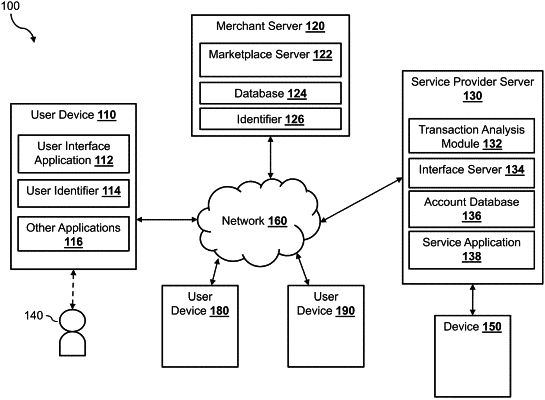| CPC G06Q 30/0185 (2013.01) [G06Q 40/00 (2013.01)] | 20 Claims |

|
1. A system, comprising:
a non-transitory memory; and
one or more hardware processors coupled with the non-transitory memory and configured to read instructions from the non-transitory memory to cause the system to perform operations comprising:
receiving a selection of a first set of user accounts from a plurality of user accounts with a service provider;
generating a first graph based on the first set of user accounts, wherein the first graph comprises a first set of nodes representing the first set of user accounts and a second set of nodes representing a second set of user accounts that have downstream connections from the first set of user accounts, wherein each pair of connecting nodes are connected according to a plurality of dimensions;
iteratively performing a random walk traversal of the first graph based on a first weight associated with a termination factor and a second weight associated with a dimension selection factor;
determining a ranking for the second set of nodes based on the iteratively performing the random walk traversal of the first graph;
transforming the first graph based on the ranking of the second set of nodes;
detecting a pattern of activities corresponding to transactions conducted between the first set of user accounts and one or more of the second set of user accounts based on analyzing the transformed first graph;
presenting the transformed first graph via a user interface of a device, wherein one or more of the second set of nodes corresponding to the one or more of the second set of user accounts are presented differently from other nodes in the transformed first graph based on the detected pattern of activities;
receiving an input via the user interface; and
performing an action to at least one user account in the one or more of the second set of user accounts based on the detected pattern of activities and the input.
|